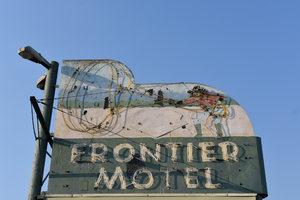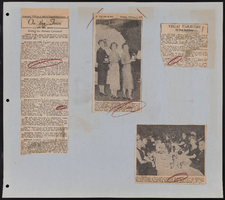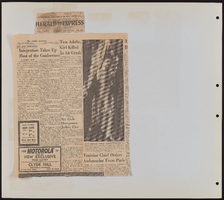Search the Special Collections and Archives Portal
Search Results
Lilly Fong Papers
Identifier
Abstract
The Lilly Fong Papers are comprised of the professional and personal papers of Lilly Fong, the first woman and first Asian-American member of the University and Community College System of Nevada (UCCSN), now known as the Nevada System of Higher Education (NSHE) Board of Regents. The papers date from 1964 to 1992 and document Fong's community activities in various Las Vegas and Southern Nevada organizations in addition to her work on the UCCSN Board of Regents. Materials include correspondence, meeting minutes, letters, and press releases from various organizations, including the Board of Regents, the University of Nevada, Las Vegas (UNLV), the American Association of University Women (AAUW), and the First Presbyterian Church in Las Vegas.
Archival Collection

The Palace Club in Reno, Nevada: postcard
Date
Archival Collection
Description
Image
Bella Tyktin Stern Papers
Identifier
Abstract
The Bella Tyktin Stern papers (approximately 1930-1997) document the life and travels of Las Vegas, Nevada resident Bella Tyktin Stern. The collection focuses on the trips she took within the state of Nevada as a guide for Nevada Discovery Tours, featuring travel itineraries and travel brochures. The collection also includes biographical materials, such as personal correspondence, legal documents, postcards sent to Stern from her Aunt Rose, and an untranslated copy of Stern's unpublished autobiography written in German,
Archival Collection
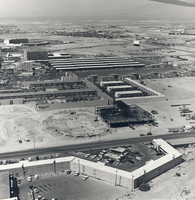
Aerial photograph of Circus Circus construction site, Las Vegas, Nevada, 1967-1968
Date
Archival Collection
Description
Image
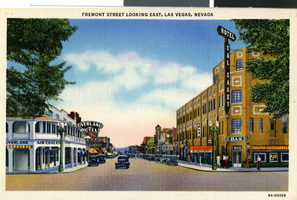
Postcard of Fremont Street, Las Vegas, circa 1930s-1940s
Date
Archival Collection
Description
Image
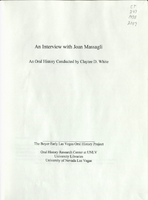
Transcript of interview with Joan Massagli by Claytee White, August 19, 2010
Date
Archival Collection
Description
Joan Massagli spent her childhood in the Tacoma, Washington area, singing three-part harmony—a member of a musically talented family that included five children and an aunt and uncle who raised all the kids to enjoy music. By high school in the early 1950s, she and her two older sisters were regulars on a local TV show. In 1956, the Sawyer Sisters act was formed and they were soon obtaining regular gigs in Las Vegas. Their popularity continued form 1957 to 1964 and they played many of the major hotels, usually as a warm up act for headliners that includes a list of names such as Roy Clark, Louis Prima, Shecky Greene, and Delia Reece. At first the Sawyer Sisters included older sister Nanette Susan and Joan. When Nanette quit to raise her family, youngest sister Kate stepped into what was called a "lively and lovely" trio. Joan met her future husband and musician Mark Tully Massagli, while performing in the early 1960s. Caring for ailing parents while working mostly in Las Vegas, the couple made Vegas home. Even after the Sawyer Sisters name faded from the Strip's marquees, Las Vegas remained home to the Massagli's, who raised their children here. Today they live in the Blue Diamond Village area and recall the changes that have occurred on the Las Vegas Strip—especially from an entertainer's point of view.
Text
